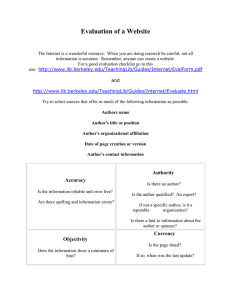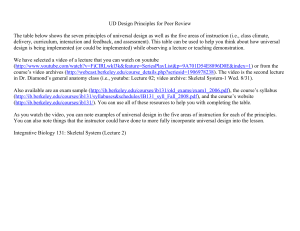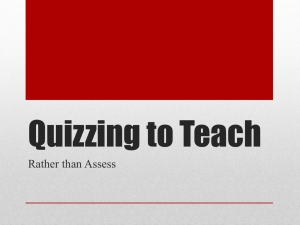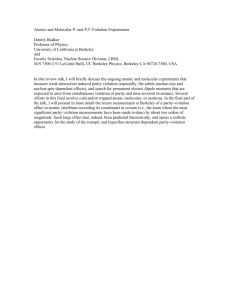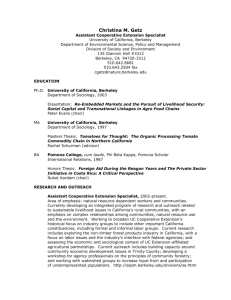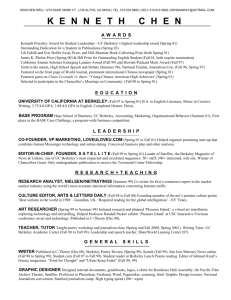Primary vs. Secondary Sources
advertisement
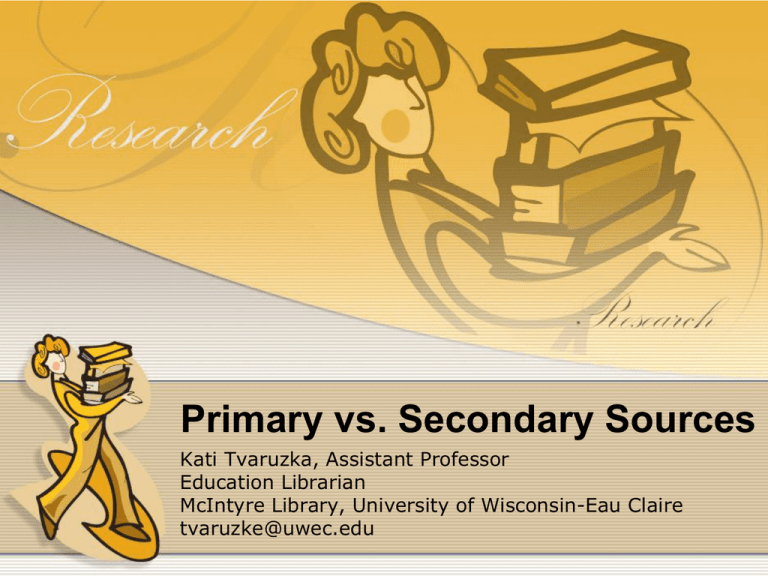
Primary vs. Secondary Sources Kati Tvaruzka, Assistant Professor Education Librarian McIntyre Library, University of Wisconsin-Eau Claire tvaruzke@uwec.edu Assignment: • Among the visuals used in your presentation, you must include at least TWO primary sources. • They must be directly related to your content. • Complete the “Primary Sources Assignment” found on the website under “Handouts.” Primary Sources • Accounts of an event written by the person who witnessed or experienced it FIRST HAND! • Original Documents, Unpublished – not about another document or account • Published works - as long as they are written soon after the fact and not as historical accounts Primary Sources Include: • Diaries • Letters • Memoirs • Journals • Speeches • Manuscripts • Statistical Data • Interviews • Photographs • Audio or video recordings • Research reports (natural or social sciences) • Original literary or theatrical works Secondary Sources • Interpret primary sources - at least one step removed from the event or phenomenon under review • Examination of studies that other researchers have made of a subject • Second Hand - conveys the experiences and opinions of others Secondary Sources • Usually in the form of published works • Journal articles • Books • Radio and TV documentaries How do you know? • Ask yourself some questions: • How does the author know these details? • Was the author present at the event or soon on the scene? Where does this information come from—personal experience, eyewitness accounts, or reports written by others? Are the author's conclusions based on a single piece of evidence, or have many sources been taken into account? QUIZ 1. Primary sources are written by a)People who experienced the event first-hand. b)People who have studied the event after the fact. 2. Secondary sources are written by a)People who were eyewitnesses to the event. b)People who have done extensive research about the event. For more information… • Library Research: Finding Primary Sources. Berkeley: Library, University of California, Berkeley. http://www.lib.berkeley.edu/TeachingLib/Guides/PrimarySource s.html • Research Skills Tutorial: Primary Research. Toronto: Gerstein Science Information Centre. http://www.library.utoronto.ca/gerstein/tutorial/primary_resear ch1.html • Primary and Secondary Sources. Ithaca College. http://www.ithaca.edu/library/course/primary.html Quiz 3. Primary sources are a. the most important sources b. the evidence left behind by participants c. the first sources that a researcher should consult d. sources written by the most important scholars e. sources referred to in lectures Quiz 4. Which of the following is NOT a primary source: a. b. c. d. e. memoirs and autobiographies speeches minutes from an organization or agency artifacts an encyclopedia • 5. Understanding the difference between primary and secondary sources is important because a. different types of sources provide different kinds of information b. sometimes a primary source has a greater impact in a paper than a secondary source. c. primary and secondary sources can each provide different points of view on the same topic. d. all of the above Primary or Secondary? 6. Charles Darwin’s book on evolution, The Origin of the Species. Primary or Secondary? 7. Barbara Walter’s 2001 interview with George W. Bush regarding his impending inauguration. Primary or Secondary? 8. The autobiography of John Scopes, the biology teacher who was tried and convicted in 1925 for teaching the theory of evolution in a Tennessee public school. Primary or Secondary? 9. A Civil War soldier’s diary Primary or Secondary? 10. An interview with a survivor from the Titanic Primary or Secondary? 11. A book by an astronomer providing precise experimental data illustrating that the universe began with a “Big Bang.” Primary or Secondary? 12. Abraham Lincoln’s Dec. 26, 1864 letter to General Sherman congratulating him on his military capture of Savannah several days before. Primary or Secondary? 13. A biography of the marriage between Princess Diana and Prince Charles Primary or Secondary? 14. An online journal article about the historical significance of Abraham Lincoln’s “Gettysburg Address” Primary or Secondary? 15. Excerpts from the Declaration of Independence. Primary or Secondary? 16. A book by a journalist that highlights the major historic events of the 19th century Primary or Secondary? 17. A survey you conducted to see if the majority of students commute to school
